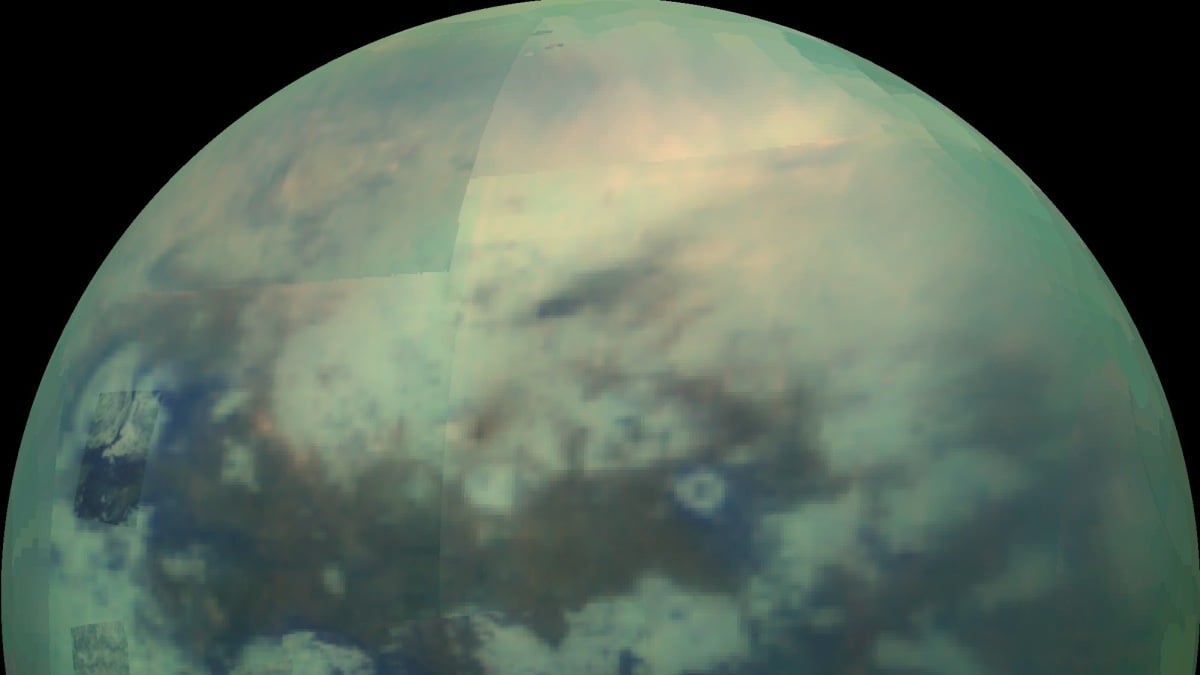Saturn’s largest moon, Titan, appears to have the right ingredients and conditions for a certain kind of tiny bubble to form that has the potential to lead to alien life.
These microscopic bubbles — called vesicles — could naturally occur in Titan’s methane lakes, according to a new NASA study. On Earth, the structures are considered a crucial early step in the development of living cells. On Titan, a moon 880 million miles away in space, they could hint at chemistry capable of mimicking an Earth-like path to simple life-forms.
Titan is no ordinary moon. It’s the only place besides Earth in the solar system known to have a thick atmosphere, active weather, and liquid on its surface. But instead of water, Titan’s lakes and seas are filled with methane and ethane. They cycle through the atmosphere, forming clouds and oily rain that shape the landscape below, similar to Earth’s water cycle, but at temperatures hundreds of degrees below freezing.
Scientists have long wondered whether Titan’s liquids could also provide an environment for the chemical building blocks of life — or rather, the kind of life people know about.
“The existence of any vesicles on Titan would demonstrate an increase in order and complexity, which are conditions necessary for the origin of life,” said NASA scientist Conor Nixon in a statement.
Mashable Light Speed
Two black holes merged in outer space and created something colossal
From upper left to lower right, Titan’s methane lakes get coated in a film of amphiphile molecules; methane rain splashes the surface, creating a coated mist; then the droplets fall into the lake again, getting another coating in the process and becoming a vesicle.
Credit: Christian Mayer / Conor Nixon / doi:10.1017/S1473550425100037 illustration
Scientists believe one of the most important steps in the origin of life on early Earth was the formation of vesicles. These protocells develop when certain molecules arrange themselves into spherical pockets encased in flexible membranes. Water and other substances can get trapped within them, thus serving as natural containers for complex reactions. Because of this, NASA researchers have wondered whether a similar process could take shape in those freezing lakes on Titan, one of Saturn’s 274 known moons.
According to the new study, published in the International Journal of Astrobiology, it could. If a methane raindrop were to hit one of the moon’s lakes, it could splash back a mist of droplets. These droplets, along with the lake’s surface, could become coated in certain molecules called amphiphiles. If the droplets were to then land back on the lake, their surfaces could fuse, creating a double-layer membrane droplet.
The result could be a vesicle floating in liquid methane — similar to how the first cell-like structures may have formed on Earth. Over time, these vesicles might float, interact, and evolve into the groundwork for primitive cells.
While there’s no direct evidence yet that vesicles actually do exist on Titan, the research shows it would be possible in the alien world’s current conditions. NASA’s upcoming $3.35 billion Dragonfly mission won’t visit Titan’s lakes directly, but the new findings offer a reason to keep looking.
“We’re excited about these new ideas,” Nixon said. “They can open up new directions in Titan research and may change how we search for life on Titan in the future.”
